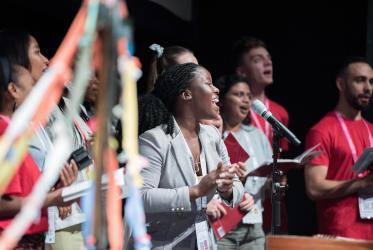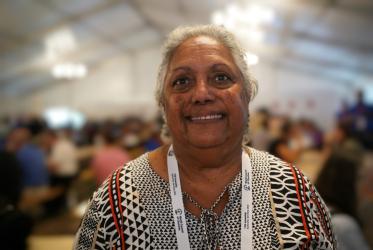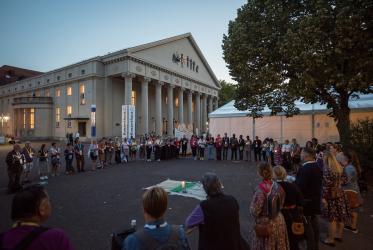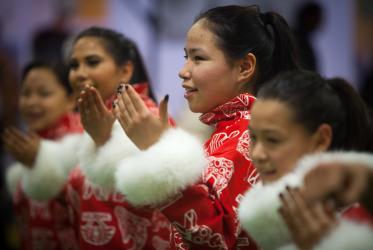We traveled only a short distance through our residential neighbourhood to a lakeside park at the mouth of a river but found ourselves on a voyage of discovery. Our intent was to learn more about the history of the area as told by aboriginal people. We learned that and much more.
A group of 13 of people from four United Church of Canada parishes in the west end of Toronto met recently with two aboriginal cultural guides to walk around the mouth of the Humber River where it flows into Lake Ontario, one of five North American Great Lakes. Phil Côté and John Johnson are with an organization of cultural historians and traditional storytellers called First Story. Their mission is to help people of European descent better understand the history of the country’s First Nations.
Côté has a Masters degree in art and is a spiritual leader for traditional practices such as the pipe and sweat lodge ceremonies. Johnson has a Ph.D. in communications and culture, focussed on oral story telling.
Our waterside pilgrimage began with a smudging ceremony in which we fanned the smoke of smouldering sweet grass over our bodies from head to eyes, ears to mouth, and legs to feet. This, Côté explained, was to prepare us to learn. Nature is the master teacher, he told us, and we are its students.
We discovered the medicinal properties of plants and bushes we had previously considered common weeds, we heard the varying interpretations of place names that were originally Indigenous words that were gradually anglicised to become « Toronto » and « Ontario », and we discovered that aboriginal forest management practices led to the intentional creation of savannah lands in and around the city: savannah encourages the growth of the plants that attract wildlife and preserve tree species such as the prized black walnut.
We learned how European fur traders made fortunes from selling furs by using river and lake trade routes such as those along the Humber River that were established before their arrival. First Nations peoples eventually battled each other for control of those ancient routes, spurred by rivalry between French and English traders. The Catholic Church arrived with French traders and English traders established Protestant churches. The dominance of each church family along linguistic lines continues to today.
Perhaps most precious to us as Christians on a pilgrimage to the unseen roots and origins of the neighbourhood where we attend church, was the discussion of the effect of the Truth and Reconciliation Commission (TRC) on non-aboriginal people. In a series of hearings throughout the country over a six-year period, the TRC gathered stories of former students of church-run aboriginal residential schools. The Commission published its recommendations in June at the conclusion of the hearings. Key amongst those was a call for non-aboriginal Canadians to learn about the traditions, history, and current concerns of the country’s aboriginal peoples.
In the wake of media coverage of the Commission’s recommendations, more and more groups are contacting First Story. It is, says Johnson, the time prophesied in traditional teaching; when Indigenous peoples would be called on to share their wisdom with “western people”. The values of the majority population of Canada have to change if we are to avoid environmental disaster, he says. Westerners are now open to being taught by aboriginal people because it is “the ethics of the time”, he told us.
Our group certainly left knowing we had learned to see our neighbourhood through new eyes. We had engaged in dialogue with guides who had greatly enriched our pilgrimage that day and had nourished our connection to the presence of the Creator in all living things.







